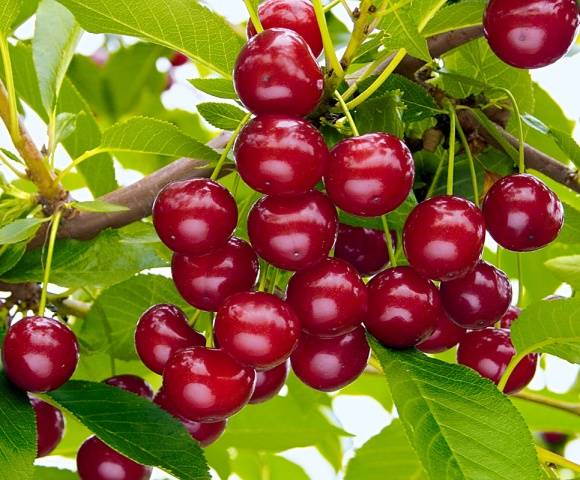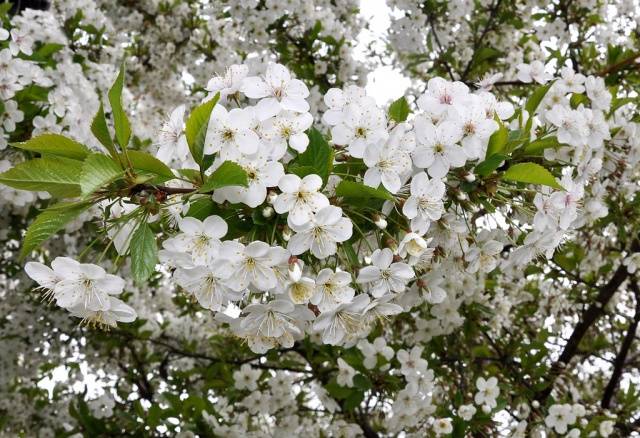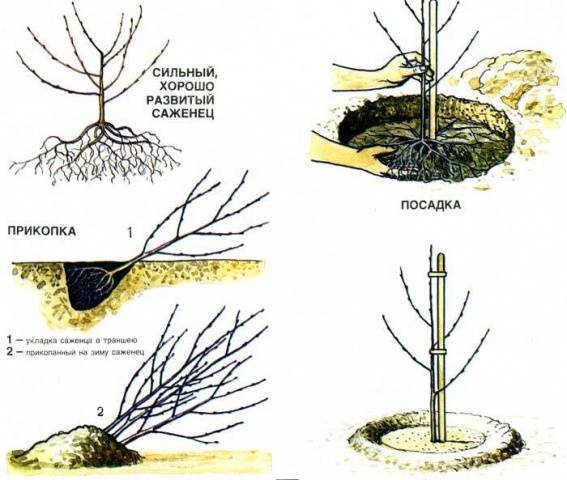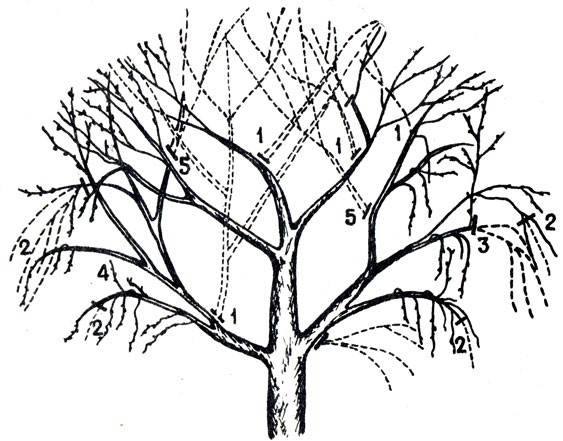Content
The beauty of a blooming cherry orchard is unlikely to leave anyone indifferent. And if this beauty turns into delicious berries over time, this is doubly good. It is such a tree that can decorate any garden, and at the same time please with a bountiful harvest, is Ashinskaya cherry - a young promising variety of Russian selection.
Breeding history
Ashinskaya is a spontaneous hybrid of garden cherry and steppe cherry (bush). Named in honor of the regional center Asha, Chelyabinsk region, from where the material for selection was taken. The authors of the variety are Russian scientists from the South Ural Research Institute of Horticulture and Potato Growing (YUNIIPOK), Chelyabinsk. Since 2002, the variety has been included in the State Register for the Ural Region.
Description of culture
The table below shows the main characteristics of the Ashinskaya cherry variety.
Parameter | Value |
Barrel type | Stam |
Adult tree height | Up to 3 meters |
Base thickness | Up to 40 cm |
Crown | Elongated conical, moderately compressed, prone to thickening |
Foliage | High |
Leaves | Oval, up to 8 cm long, up to 4 cm wide, pointed at both ends. The plate is shiny, smooth, without pubescence, dark green |
Escapes | Ash brown, rounded, up to 40 cm long, not pubescent |
Bud | Outward bent, elongated, medium |
Flowers | Small, collected in inflorescences of 5 flowers, white, fragrant |
Flowering type | Mixed |
Now it is grown in the Ural region, in the North Caucasus and in Central Russia from the Upper Volga to the Kuban.
Variety characteristics
Cherry Ashinskaya is considered a productive winter-hardy variety of late ripening. The average lifespan of a tree is 35–40 years. Fruiting begins at the age of four. The hybrid is suitable for both industrial cultivation and individual gardening.
Drought resistance and winter hardiness
From its ancestor - the steppe cherry - Ashinskaya got good resistance to drought and frost. Average winter hardiness - up to -42 degrees. The frost resistance of generative buds is average, the frost resistance of flowers is above average. After damage by severe frosts, Ashinskaya cherry is able to quickly recover with almost no loss of yield.
Pollination, flowering period and ripening times
Cherry of this variety is partially self-fertile; in the absence of pollinators, 20-50% of flower ovaries are fertilized. To increase yields, it is recommended to plant any stone fruit crops with similar flowering periods near Ashinskaya. Blooms in the last decade of May, extended flowering period. Photo of Ashinskaya cherry during the flowering period below.
Productivity, fruiting
Fruiting of cherries of the Ashinskaya variety begins from the fourth year and lasts annually up to 30 years or more. Fruit ripening is amicable. Productivity from one adult tree is 8-10 kilograms. The table shows the main characteristics of Ashinskaya cherry fruits:
Parameter | Value |
Fruit shape | Oval-rounded, with a narrow funnel and a weakly pronounced abdominal suture |
Skin color | Maroon, shiny |
Pulp color, consistency | Dark red, medium density, juice red |
Taste | Pleasant, sweet and sour |
Bone | One, weighing 0.17-0.2 g., Easily detachable |
Fruit size | Middle |
Fruit weight, gr. | 4,5 |
Tasting score: appearance taste |
4,7 4,4 |
Content in fruits,%: ascorbic acid dry matter free acids sugars |
10,3 16,3 1,8 11,7 |
Assignment of the variety | Dessert |
Scope of berries
Despite the fact that the Ashinskaya cherry variety is a dessert, the berries are well suited for processing. Used for making juices, preserves, compotes, jams.
Disease and pest resistance
The variety has a high resistance to coccomycosis. No other diseases and insect pests were affected.
Advantages and disadvantages
With all its advantages, Ashinskaya cherry has a number of disadvantages. The table shows its positive and negative qualities:
Positive | Negative |
High yield | Late ripening and low resistance to transportation reduce the liquidity of production in commodity volumes |
Good taste and fruit size | Average frost resistance |
Annual fruiting up to 30 years | High stem creates inconvenience when picking berries |
Drought, disease and pest resistance | Part of the crop can simply not be processed in time due to the simultaneous ripening of fruits |
You can propagate in any way |
Landing features
An adult cherry of the Ashinskaya variety is a beautiful tall tree that can decorate any garden both during the flowering period and during the ripening of the crop. When planting it, some features of the variety should be taken into account.
Recommended timing
The optimal time of the year for planting Ashinskaya cherries is the spring, when the soil has already completely thawed, but the buds have not yet begun to bloom. In central Russia, this period falls on April. Later dates are undesirable due to the worse survival rate of seedlings.
Autumn planting is not carried out, in this case it is more expedient not to plant the seedlings, but simply to dig in until spring from the south side of the house or fence and shelter from frost.
Choosing the right place
When choosing a planting site, it is worth considering the size of the future tree and its longevity. It will most likely not be possible to transplant an adult cherry to another place, since this tree does not tolerate transplanting well and will most likely die. It is preferable to use the southern sides of buildings and fences, since cherries do not like cold winds. It is desirable that the soil at the planting site has an acidity close to neutral and not too heavy.
What to plant next to cherries
Not all neighboring plants get along well with each other. The optimal neighborhood for Ashinskaya cherry will be the same stone fruit trees - cherry, sweet cherry, plum. They can be planted at a distance of at least 3 meters from each other so that their crowns do not intertwine with each other. Undesirable neighbors for cherries are oak, linden, maple. And also, you should not plant some shrubs next to Ashinskaya: gooseberries, sea buckthorn, raspberries, as well as light-loving currant varieties.
Selection and preparation of planting material
Ashinskaya cherries are planted mainly by seedlings. They can be prepared independently or purchased at the nursery. Cuttings for future seedlings are prepared in early summer, in cloudy weather, in the morning or in the evening. The length of the cuttings is 30–35 cm. The cherry shoot is soaked for a day in a growth stimulator, while immersed in it with the cut end only 1.25–2 cm. After that, the cuttings are planted in a nutritious soil and covered with a film. In two weeks, adventitious roots should appear, in a month - difficult to root.
Landing algorithm
It is better to prepare a pit for planting Ashinskaya cherry seedlings in the fall. Its standard size is 60x60x60 centimeters. The sod land is preserved for the preparation of nutritious soil.A peg is hammered into the center of the pit for a garter of the future tree. A layer of earth is poured into the bottom in the form of a mound in such a way that the root collar of the seedling standing on it is 5 cm above the ground level.
Sod land is mixed with humus in a 1: 1 ratio, the roots of the seedling are covered with it. The ground around it should be lightly tamped so that a ring-groove 8-10 cm deep is formed around the seedling. After that, the seedling is watered with three buckets of water, and the ground around it is mulched with sawdust or humus.
The complete guide to planting cherries is in the video below:
Follow-up care of the culture
Ashinskaya cherry is undemanding to constant care, but regular pruning, feeding and watering can significantly increase yields. Pruning is a must, as the plant produces many shoots that greatly thicken the crown. Dry, broken, and branches growing inside the crown are also cut out, since it is very inconvenient to harvest from them. It is also necessary to remove the numerous basal shoots of cherries, which the plant forms in excess.
Cherries need watering only during periods of drought. You need to feed the trees occasionally, it is best to use humus, peat and wood ash for this, bringing them along with digging directly into the trunk circle. Fertilizing with mineral fertilizers is needed only on very poor sandy loam soils. To do this, you can use superphosphate and potassium sulfate, diluted in a proportion of 1 tbsp. spoon each into a bucket of water. This top dressing is done in the fall, about once every three years.
Diseases and pests
Cases of defeat of this cherry varieties diseases are extremely rare and occur only on very neglected trees. The appearance of insect pests was also not observed. The crop can be partially spoiled only by birds pecking berries, but even such cases are not massive.
Conclusion
Despite the fact that Ashinskaya is a fairly young variety, it has a good future. This is due to its unpretentiousness and undemanding care. Frost resistance is also of great importance, as well as the ability to quickly recover after severe frosts. Abundant annual fruiting and a long life span of the tree makes it possible to definitely recommend this variety for growing in garden plots.













